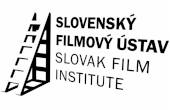SGA was founded in Belgrade in March 2018, following the example of similar organisations that provide support to the gaming industry sector in some of the most developed economies around the world. They deliver educational programmes, establish new partnerships, conduct research and participate in numerous processes that support the quality, development, growth and internationalisation of Serbian gaming products and companies.
Central and Eastern Europe is one of the most important locations for global games developers and studios, and artists in the region are increasingly working for both film and games. FNE looks at how these two sectors of the entertainment industry are converging and why this trend is important for the future development of both.
FNE: When was the Serbian Games Association founded and what have been your main missions and strategic projects so far?
Kristina Janković Obućina: The Serbian Games Association was founded in March 2018. Based on what other similar associations were doing in different countries, local gaming companies felt it was the right time to have a trade body organisation. Since then, our focus has been on networking, decentralisation, education and increasing the competitiveness of our members on the global market, creating the best possible conditions for making and publishing video games in Serbia, as well as to improve the talent and creativity of people involved in the sector.
FNE: What is the current situation in the Serbian gaming industry and what distinguishes it from the industry of other countries?
Kristina Janković Obućina: As in the rest of the global gaming industry, the past several years have shown significant growth. Currently, there are more than 130 companies, studios and teams working in Serbia, not only developing games but also offering an increasing number of game-related services, including VFX, props, art, and cinematic development. There are more than 2,300 people employed, 30% of whom are women, which makes us the number one country in Europe based on this statistic.
FNE: Film and games converge is a hot topic now. What can you tell us about the relationship between the gaming industry and film in your experience?
Kristina Janković Obućina: Many of our members benefit from using technologies developed in the film industry, but the situation is more and more reversed. A lot of the tools and techniques developed in gaming are now being used in film, TV, advertising, even the real estate industry. The possibilities are wider, these tools are more flexible and in a lot of cases, more affordable. From a narrative standpoint, the line between linear and nonlinear storytelling is blurrier than ever.
FNE: Are there any Serbian films that are being turned into games or Serbian games that are being turned into films or TV series?
Kristina Janković Obućina: Not for now. This was always a tricky business, and many projects based on this premise failed. There has been some progress, especially the recent mega success Arcanum. We're eagerly awaiting the live action version of The Last of Us. We would love to see an animated series based on a Serbian game in the years to come.
FNE: Which Serbian games would you single out that have had international success?
Kristina Janković Obućina: There are great examples in almost all genres and platforms. The most successful mobile sports game globally is Nordeus' Top Eleven, a football manager game that has been around and thriving for more than a decade. Indie titles I would like everyone to try are the notoriously hard RPG Underrail, a lovely simulator Going Medieval, and if you have less time try extremely successful casual games WokaWoka, Love Story or Slice it All!
FNE: How much is the turnover and how much the percentage of expected growth in the Serbian Games industry?
Kristina Janković Obućina: In 2021 the revenue of the Serbian gaming industry was 125 m EUR. A steady 10% YoY growth is bound to continue. It's interesting to note that 60% of our teams work on original IPs, roughly half of those are self-published and two thirds of companies earn through direct sales.
FNE: How do you see the development of the relationship between the film and gaming industries?
Kristina Janković Obućina: There is an immense potential here that I believe has not been explored enough. The number one problem for gaming teams in the future will be the lack of employees. This is why knowledge exchange between these two very similar mediums is crucial. Both could benefit from each other's findings and ideas, and film and games will be even more intertwined in terms of technologies and storytelling tools in the future.
Additionnally, Milica Božanić from Serbia Film Commission stressed out the following:
 Milica Božanić: Film and gaming represent the two most dynamic creative sectors in Serbia with large output in both servicing and producing own IP and content. With access to new technology there is great potential for a new generation of storytellers to be spotlighted and to build cinematic worlds and genres that have been out of our reach traditionally.
Milica Božanić: Film and gaming represent the two most dynamic creative sectors in Serbia with large output in both servicing and producing own IP and content. With access to new technology there is great potential for a new generation of storytellers to be spotlighted and to build cinematic worlds and genres that have been out of our reach traditionally.
New initiatives are being launched such as the CGA Belgrade Conference that bring these two sectors together. The Crater Training Center is another example of a provider that is working with gaming and technology companies like Epic games/3Lateral in boosting new talent into the industry, as well as shifting between the industries. Through this exchange we expect new creative sparks to come our way very soon.




















